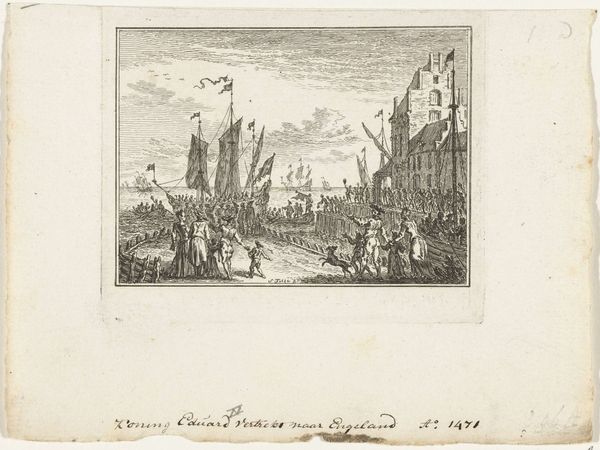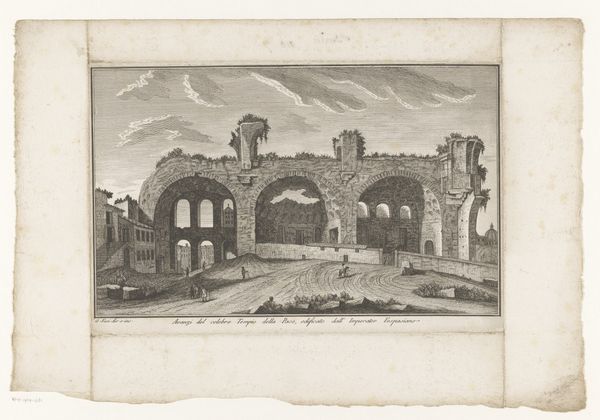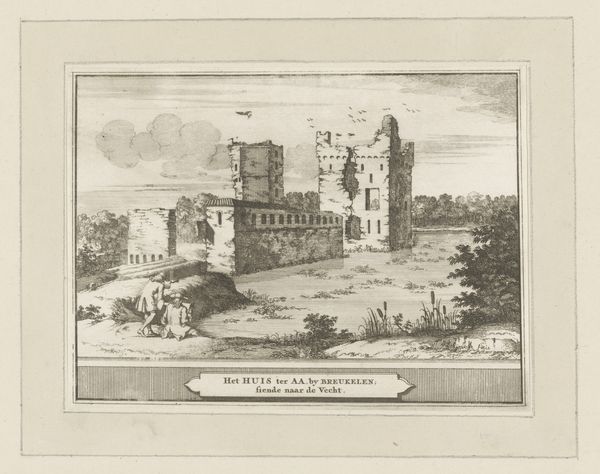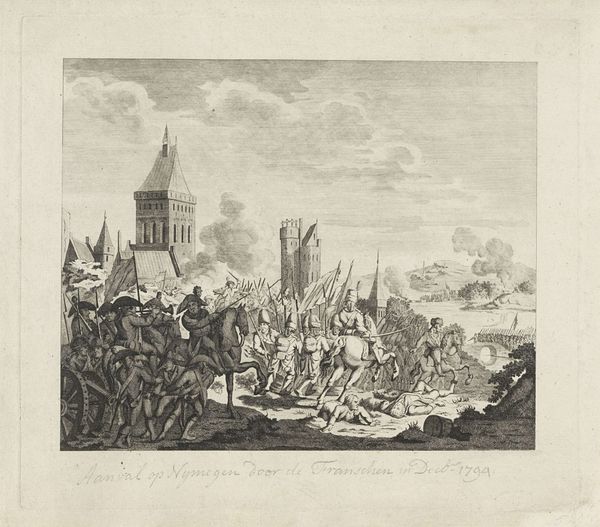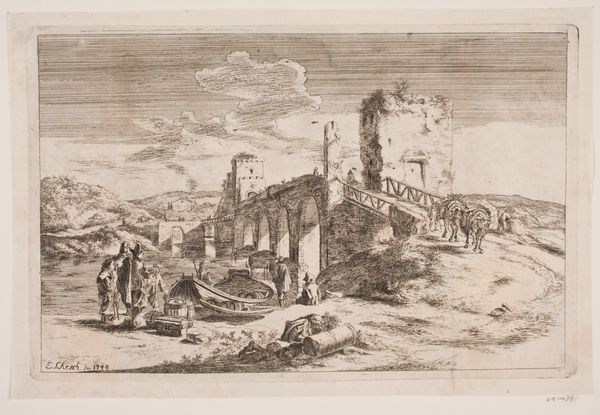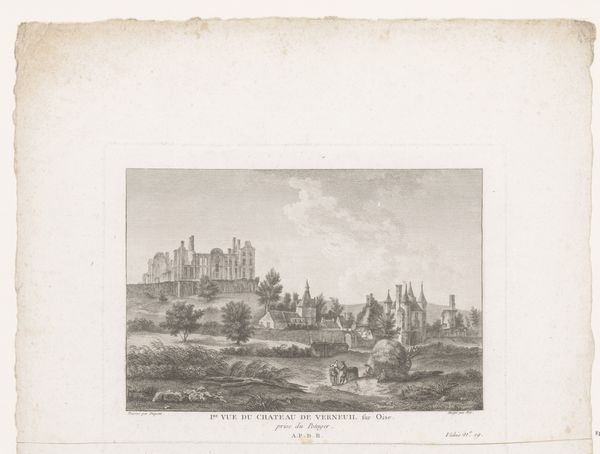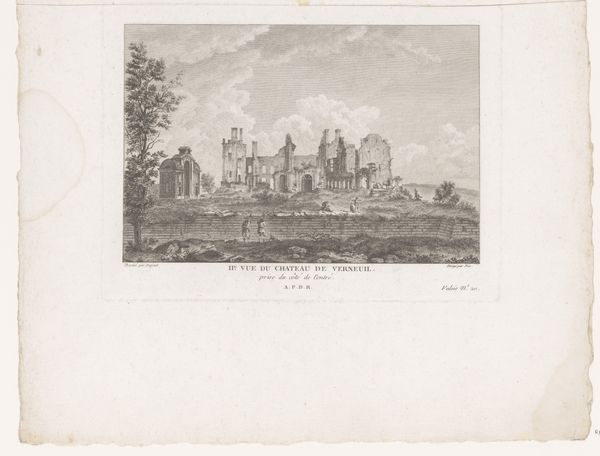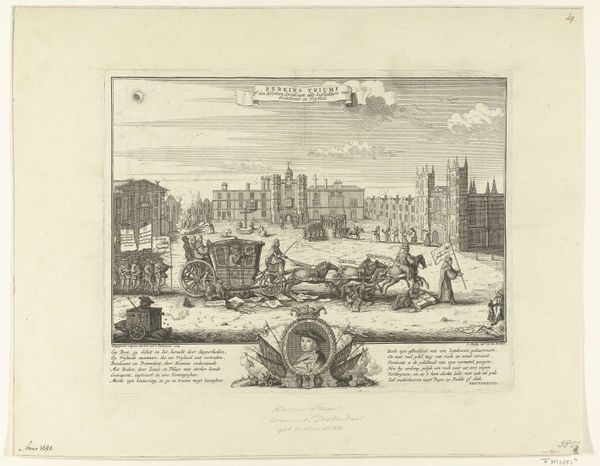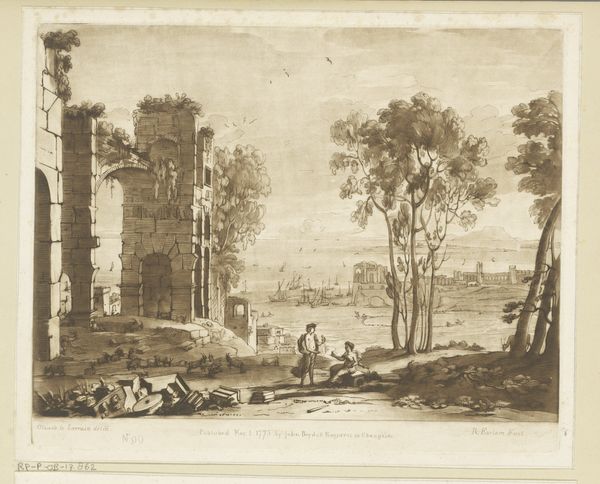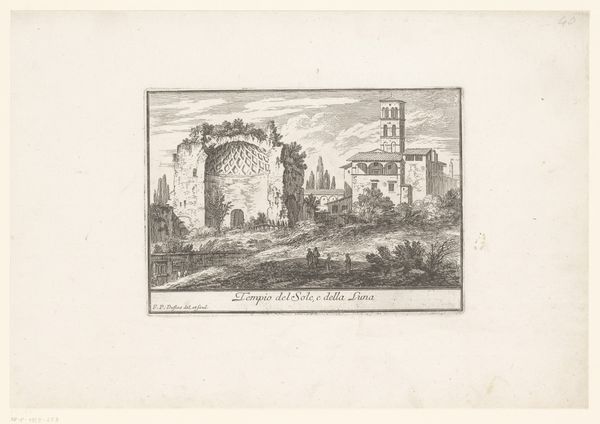
Plate 9: the Arch of Constantine at left, part of the Colosseum at right, various horses and figures in foreground and background, from 'Roman landscapes and ruins' (Paysages et ruines de Rome) 1641 - 1651
0:00
0:00
drawing, print, etching
#
drawing
#
baroque
# print
#
etching
#
landscape
#
etching
#
arch
#
horse
#
cityscape
#
history-painting
#
italian-renaissance
Dimensions: Plate: 5 1/16 × 5 3/16 in. (12.9 × 13.1 cm) Sheet: 5 1/4 × 5 3/8 in. (13.4 × 13.7 cm)
Copyright: Public Domain
Curator: What catches my eye immediately is the cyclical framing of Stefano della Bella's etching. It's as if we're peering through a spyglass into 17th-century Rome. Editor: Indeed, the composition encloses this scene with an air of antiquity and contemplation. Look at how he utilizes the ruins of the Colosseum on the right side as a prominent structure. The Arch of Constantine is more of an accessory. The stark contrast of tones gives it an austere, almost melancholic atmosphere. Curator: Della Bella, who was active from 1641 to 1651, gives us not just a cityscape, but a symbolic representation. Arches, traditionally symbols of triumph, stand beside ruins, echoing themes of history's passage, power's decay and humankind's lasting marks on the world. And yet, daily life appears to continue uninterrupted. Editor: The material realities of producing etchings also play a role here. Etching allows for a level of detail difficult to achieve through engraving, doesn’t it? He depicts all these minute figures and detailed surfaces, suggesting an active marketplace for prints portraying Rome’s enduring monuments and cityscapes. Curator: It's not just the detail, but the intentional composition. He's chosen to place the focus on these particular landmarks, imbuing them with the weight of Roman history and the power structures they represent, whether in their glory or decay. Even the figures add a sense of continuity, small actors moving in a long play. What story do you think this symbol evokes for people? Editor: The symbolism you are suggesting may well resonate. I am however interested in the practicalities of its construction: How many stages did this particular piece go through to attain this sense of depth, this careful build-up of lines and shadow, not only recording history, but also employing labor in his own moment in time? This could also indicate an emerging interest in secular subjects—less emphasis on grand historical narratives, and more observation of contemporary life amidst these ruins. Curator: So you see that as his break with those historic archetypes? Maybe even a questioning? Editor: Perhaps. He seems as aware of materials, and marks, as he is with mythology. Curator: Considering della Bella's strategic depiction of Rome as both a thriving city and a site of ruins, my thoughts are still rooted to cultural memory here. Editor: And the cultural process, which gives rise to forms that invite cultural memory! A potent, yet subtly constructed scene that embodies artistic agency through material application, in Stefano della Bella's print now residing at the Metropolitan Museum of Art.
Comments
No comments
Be the first to comment and join the conversation on the ultimate creative platform.

